The announcement of the full-frame mirrorless Z camera system in August 2018 was a bold step for Nikon. Not only do the new Z6 and Z7 camera models do away with the mirrors and optical viewfinders that were essential components in Nikon SLRs since the 1950s, they also come with a new lens mount.
The new Nikon Z lens mount
With an inner diameter of 55mm, the new Nikon Z mount is currently the largest of all full-frame lens mounts on the market, and 25% wider than the F mount that Nikon has used on its SLRs for more than 60 years. At 16mm, the flange-back distance (the distance between the rear element of the lens and the sensor) is also much shorter than for the F mount (46.5mm).
The combination of these two factors means that there is a lot more space for projecting light onto the corners of the image sensor at straighter angles than was possible with the F mount. With the Z mount, the maximum possible angle of incidence for marginal light rays is around 44.09 degrees, compared to 12.1 degrees for the F mount. This makes it easier, at least in theory, to design high-performance lenses — especially wide-angle variants — or lenses that are smaller, lighter, and simpler than comparable F models.
None of the new Nikkor Z lenses are stabilized, because the Z-series cameras come with an IBIS (in-body image stabilization) system that moves the sensor to compensate for camera shake; by contrast, F-mount cameras use lens-based image stabilization.
The Z mount’s larger dimensions also come with a downside, though. The lens diameter at the mount point has to be larger as well, which will have an impact on its overall dimensions and weight. In addition, the short flange-back distance can result in stronger vignetting. Thankfully, this can be corrected in post-processing, and a longer lens design helps to mitigate the effect. Overall, the new Z mount offers a lot more flexibility in terms of lens design than its F-mount counterpart — and indeed, more flexibility than most full-frame lens mounts from the competition.
The current Nikkor Z lens line-up
The ability to attach almost any existing DSLR lens to the Z-series cameras using an adapter is a welcome side benefit of the Z mount’s large dimensions. However, if using adapters is not your thing, your lens choices are currently still quite limited. As with its F-mount lenses, Nikon isn’t sharing the technical details with third-party lens manufacturers. As a result, Nikon Z photographers who don’t want to use adapters are limited for now to Nikon’s own Nikkor Z lenses and to a small number of fully-manual lenses from rather obscure vendors — at least until Sigma, Tokina, Tamron, and others manage to reverse-engineer the Z mount.
The following lens models, covering focal lengths from 14 to 70mm, are currently available for the Nikon Z system:
- Nikkor Z 14-30mm F4 S wide-angle zoom
- Nikkor Z 35 F1.8 S wide-angle prime
- Nikkor Z 24-70 F4 S standard zoom
- Nikkor Z 24-70 F2.8 S standard zoom
- Nikkor Z 50mm F1.8 S standard prime
At the Nikkor Z launch in 2018, Nikon said it was working on a 58mm f/0.95 manual-focus lens, and a range of standard focal lengths are scheduled for release this year. In fact, just as these lines were written, Nikon announced the Nikkor Z 85mm F1.8 S, available in September. None of the other lenses on the Nikon roadmap have materialized yet, so for now Nikon Z6 and Z7 shooters have to choose from the list above if they want to avoid using adapters.
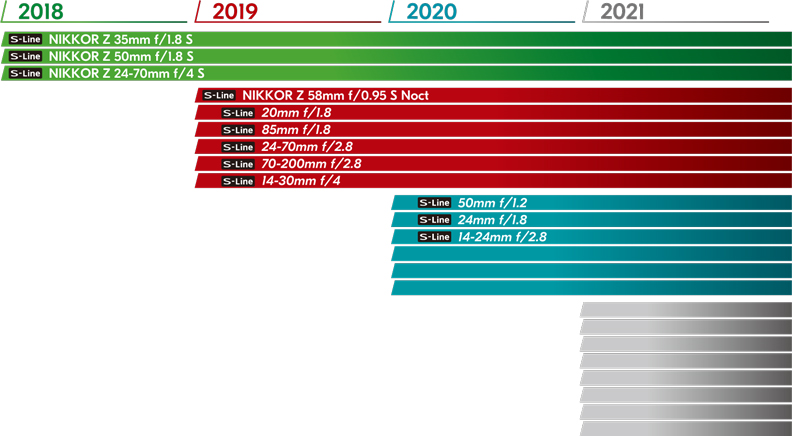
The good news is that we at DxOMark have already tested all the currently available Nikon Nikkor Z lenses. Read our summaries below or click through to the full reviews for our comprehensive analyses.
Wide-angle zoom: Nikkor Z 14-30mm F4 S
The Nikkor Z 14-30mm F4 S is the wide-angle zoom in the Nikkor Z lens line-up. It is highly compact and portable; offers a constant aperture; and features 14 elements in 12 groups, four of which are extra-low dispersion (ED) glass, and four elements which have aspherical surfaces. Thanks to its relatively flat front, it is the first 14mm to accept standard 82mm screw-in filters. The focusing system is internal and comes with a quiet stepping motor. The minimum focusing distance is 28cm (11.02”), and there’s also a mechanism to reduce the effects of focus breathing.
Considering its compact format, the Nikon Nikkor Z 14-30mm F4 S achieves a good balance of optical quality, with high and consistent sharpness across the image field, except when wide-open at f/4. When fitted to the high-resolution 45.7MP Nikon Z 7, it scores 24 points in our DxOMark lens test, putting it on par with the larger Nikon AF-S Nikkor 16-35mm F4G ED VR mounted on the Nikon D800E.
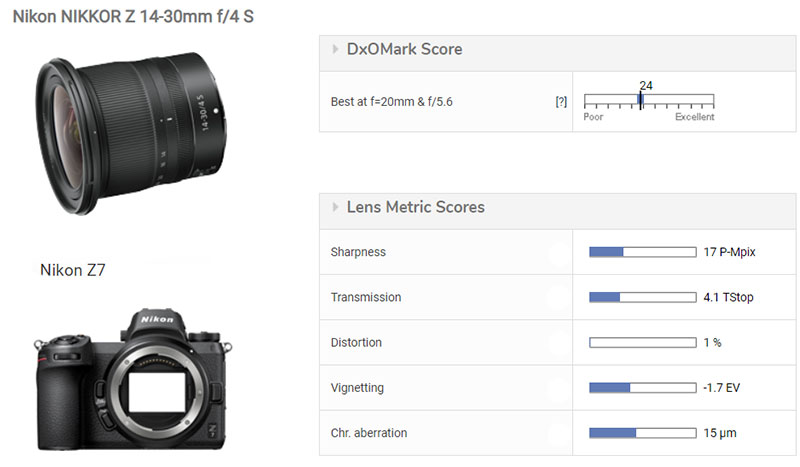
For uniform sharpness across the frame, it’s best to stop down to f/5.6. The lens has high central sharpness at all focal lengths, but doesn’t quite maintain that into the corners of the frame at the initial aperture of f/4. Considering the compact design, it’s no surprise to see high levels of lateral chromatic aberration at the wider focal lengths, and distortion is also high when uncorrected. The same is true for vignetting, which is high wide-open at all focal lengths. This said, as with chromatic aberrations, this should not be an issue when using correction software.
Overall, the Nikkor Z 14-30mm F4 S is without doubt a highly appealing solution for Nikon Z shooters. Its optical qualities and the ability to add 82mm screw-in filters make it ideal for landscape and travel photography. Just remember to stop down for optimal sharpness.
Click here for the full review on DxOMark.com
Standard zoom: Nikkor Z 24-70 F4 S
The Nikkor Z 24-70mm F4 S is a constant-aperture, moderate-speed zoom and is offered as a kit lens for both the Nikon Z 6 and the high-resolution Z 7. It features a retractable design and comes with 14 elements in 11 groups, including one aspherical extra-low dispersion (ED) element, one spherical ED element, and three aspherical elements. The lens is sealed against dust and moisture; and at 77.5 mm x 88.5 mm (3.07” x 3.5”) when retracted, it is a relatively compact model.
For its size and specifications, the Nikkor Z 24-70mm F4 S achieves a very good overall balance in performance. Mounted on the Nikon Z 7 body, it scores 29 overall in our image quality rankings. The Sharpness score of 19 PMpix is a little deceptive, however. Although the figure is not as high as for some comparable lenses, the Nikon Z 24-70mm F4 S produces highly-uniform sharpness across the frame, not only wide-open, but pretty much across all apertures and focal lengths.
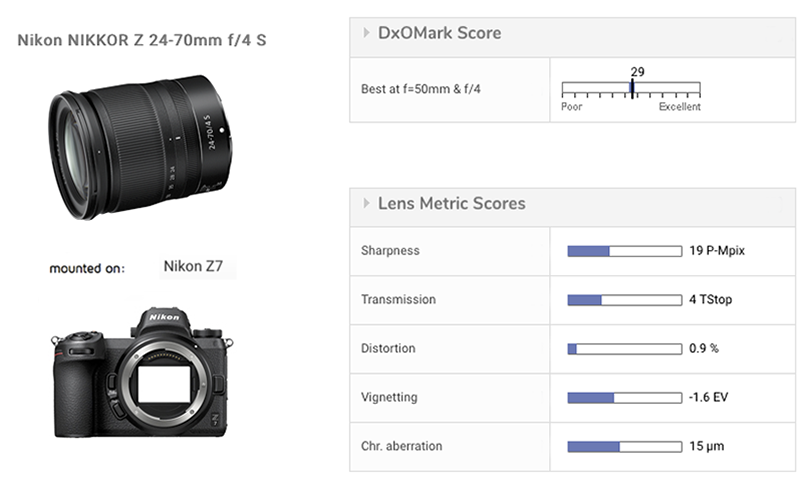
On the downside, vignetting is a little high at 70mm wide-open, as are both distortion and lateral chromatic aberration. This said, you can expect better results for out-of-camera JPEGs and when using RAW conversion software that takes the lens profile into account.
Overall, the Nikkor Z 24-70mm F4 S is an attractive option for Nikon Z photographers. It’s a very compact and user-friendly lens that offers a well-rounded optical performance. Though not cheap when bought separately, it’s an entirely different proposition when purchased as part of a kit, and well worth considering.
Click here for the full review on DxOMark.com
Standard zoom: Nikkor Z 24-70 F2.8 S
The Nikkor Z 24-70mm F2.8 S is the F4 version’s faster cousin and is designed to appeal to professional and dedicated enthusiast photographers who want to restrict depth of field more than is possible at f/4, or who want to enjoy an extra stop of light. It offers a 17-element, 15-group construction, including two ED (low-dispersion) elements and four aspherical elements. An internal focusing mechanism means the lens doesn’t change length during focusing. It’s also weather-sealed and comes with a small OLED screen for displaying such information as the precise focal length, the selected aperture, and a depth-of-field guide.
When mounted on the high-resolution 45.7MP Nikon Z 7 camera, the Nikkor Z 24-70mm F2.8 S achieves an overall score of 36, making it the best 24-70mm lens we have tested to date. It’s also the fifth-highest-scoring zoom lens in our database. Its Sharpness score of 26 is also a significant step up from the F4’s score of 19, with the F2.8 lens maintaining sharpness well across the image and throughout both the focal length and aperture ranges.
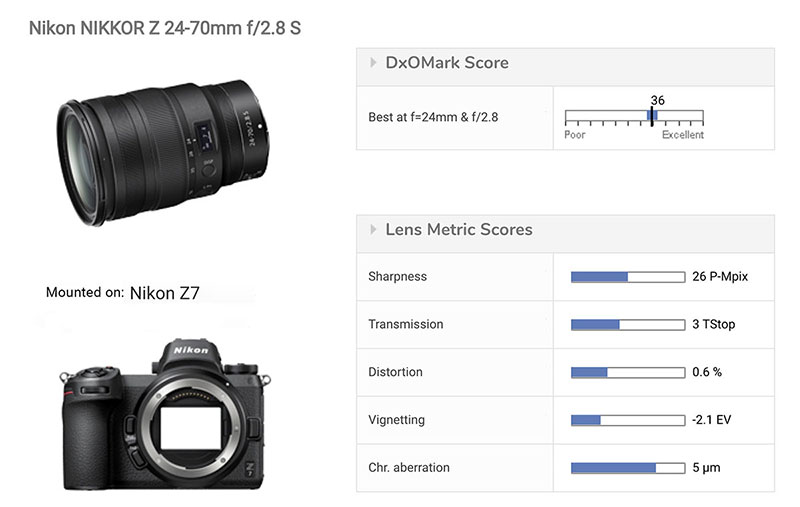
Distortion is noticeable at the extreme ends of the focal length range, but mostly corrected by the built-in RAW profile applied when images are processed. A score of –2.1EV for vignetting indicates that corner shading is also apparent in images shot with the aperture wide-open; however, the fall-off is fairly gradual.
Overall, the Nikkor Z 24-70mm F2.8 S sets a new benchmark by which other 24-70mm lenses will be judged. It’s much larger and heavier than the 24-70mm F4, but is a superior optic that’s optimized for image quality and with professional users in mind.
Click here for the full review on DxOMark.com
Wide-angle prime: Nikkor Z 35 F1.8 S
The Nikkor Z 35mm F1.8 S is a moderately fast wide-angle prime lens that utilizes 11 elements in 9 groups, all housed in a sealed barrel that protects against dust and water droplets. There’s no lens-based image stabilization (VR), due to the fact Nikon Z cameras feature 5-axis in-body image stabilization (IBIS), but the Nikkor Z 35mm F1.8 S does feature a near-silent autofocus stepping motor to reduce (if not eliminate) any focusing noise that the built-in mic might capture during video recording. Measuring 86x73mm (LxD) and weighing 370g, it’s a fairly large 35mm prime, but remains well-balanced and practical to use on the smaller Nikon Z cameras.
The Nikon’s new wider Z mount should especially benefit wide-angle lenses, and indeed, the Nikon Z 35mm F1.8 S is the highest-scoring Nikon 35mm lens we’ve tested to date. Tested on the 45.7MP Nikon Z 7 mirrorless camera, it achieves an overall score of 38 points and an impressive Sharpness sub-score of 30 PMpix at f/4. Sharpness is particularly good between f/4 and f/8, at which images are sharp edge-to-edge; at wider aperture settings, resolution is also very good in the center of the frame, but things are a little softer in the outer field.
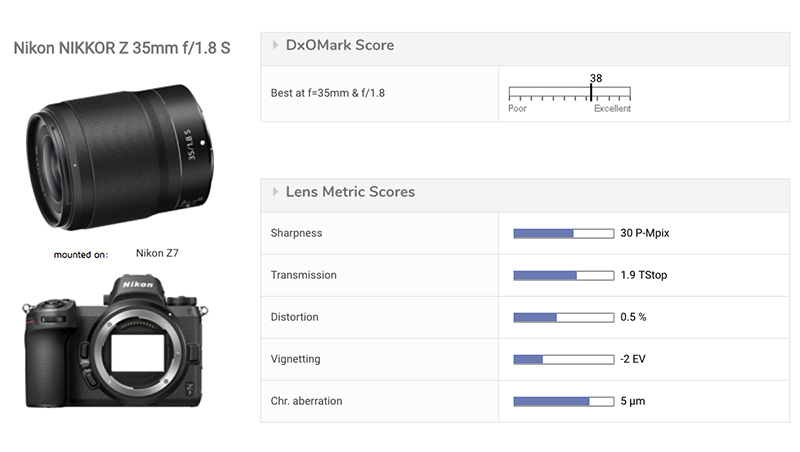
There is no evident chromatic aberration at any aperture setting, but there is some fairly strong vignetting at the wider f/1.8 and f/2.8 aperture settings. This is noticeably reduced when stopping down, but some corner shading is visible at all apertures. The barrel distortion of 0.5% isn’t unusual for this focal length and won’t have much impact on straight lines in your images. Transmission is also good at f/1.9 TStop, ensuring plenty of light for the EVF and autofocus system.
Overall, the Nikon Z 35mm F1.8 S lens is an optically excellent choice and ideal for street photography and photojournalism, as well as for general-use photography.
Click here for the full review on DxOMark.com
Standard prime: Nikkor Z 50mm F1.8 S
The Nikkor Z 50mm F1.8 S is Nikon’s standard prime for its Z-series cameras. The relatively complex optical design features 12 elements in nine groups, with two extra-low dispersion (ED) and two aspherical elements, along with the usual Nikon Integrated Coating (NIC) and Nano-Crystal Coat to help mitigate flare and ghosting. The lens is made from aluminum and engineering plastic, and is sealed against dust and moisture. Measuring 87mm x 76mm (3.43” x 2.99”) and weighing 415g (0.91 lb), it is noticeably larger and heavier than its F-mount equivalent.
Carrying some extra weight is rewarded with an excellent optical performance, though. Tested in conjunction with the high-resolution 45.7MP Nikon Z 7 body, the Nikon Nikkor Z 50mm F1.8 S achieves an Overall score of 44. The Sharpness sub-score of 37 PMpix is very high, with the lens performing very well not only at the center but across the entire image field. Sharpness is good wide-open, but peaks at f/2.8, and starting at f/8, you can see the beginnings of diffraction effects.
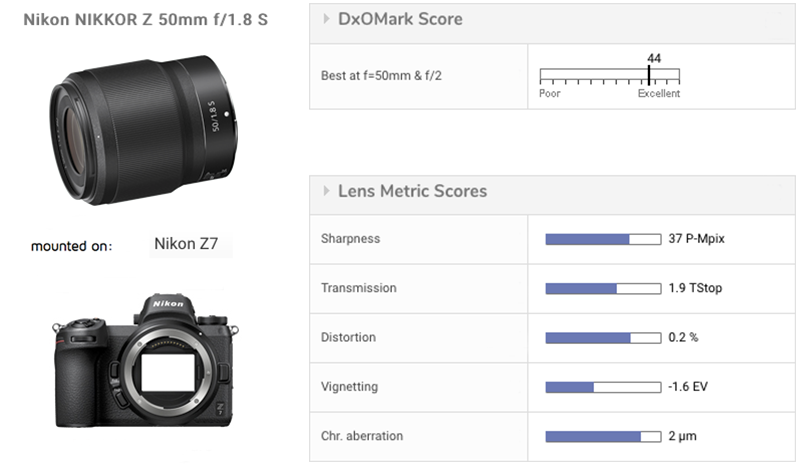
Lateral chromatic aberration is well-controlled, with very low levels at all apertures. Levels of distortion are very low, too, and high light transmission (1.9 TStop) means the lens likely has good resistance to flare and ghosting.
Overall, the Nikkor Z 50mm F1.8 S is exceptionally sharp and a very good all-round performer. Even wide-open, it comes close to some of the best and most expensive lenses currently available and is therefore an easy recommendation for any Nikkor Z user, despite the premium price tag.
Click here for the full review on DxOMark.com
Limited choice but excellent image quality
For now, Nikon Z users who want to use native Nikkor Z lenses are not exactly spoiled for choice. This is especially true for focal lengths longer than 70mm, where adapter solutions are your only option. This said, looking at the test results, it is fair to say that the lenses currently available deliver excellent image quality across the range, indicating that Nikon’s lens engineers have done a good job at taking advantage of the new lens mount’s bigger dimensions.
In the medium term, Nikon Z shooters will demand more flexibility in terms of focal length, and as the system grows, Nikon will probably also look into offering slightly more affordable options. For now, we know that Nikon has announced an 85mm lens for September 2019, and that a 58mm f/0.95 manual-focus lens and a 70-200mm zoom are in the works. We look forward to testing them as soon as they become available.


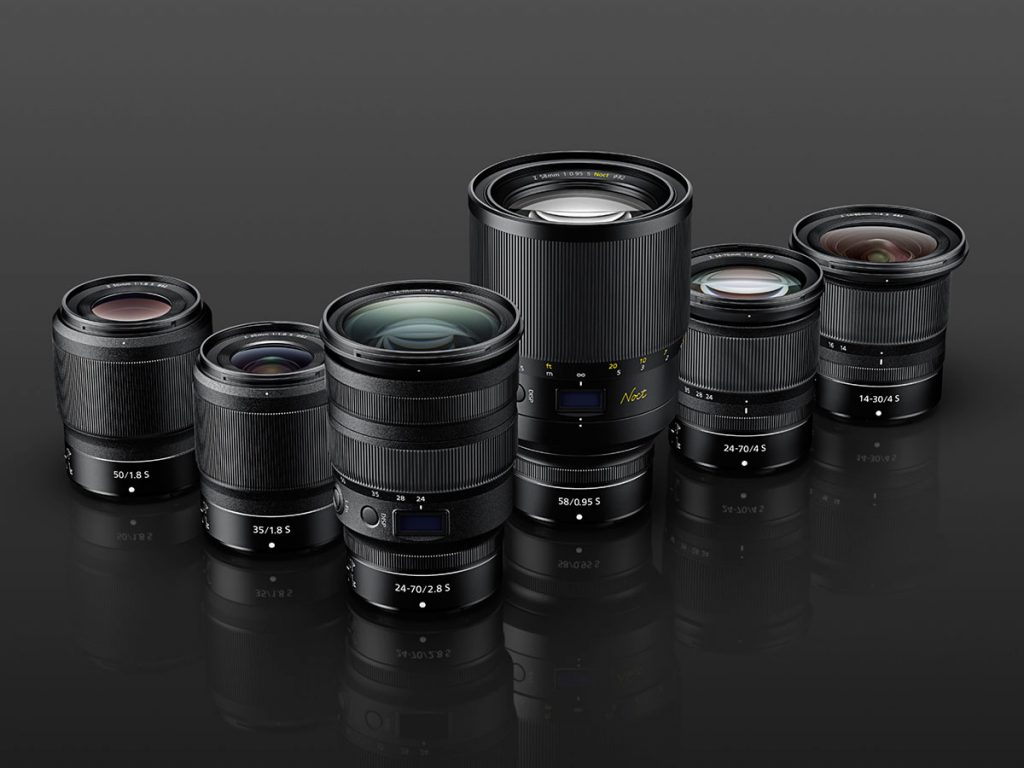
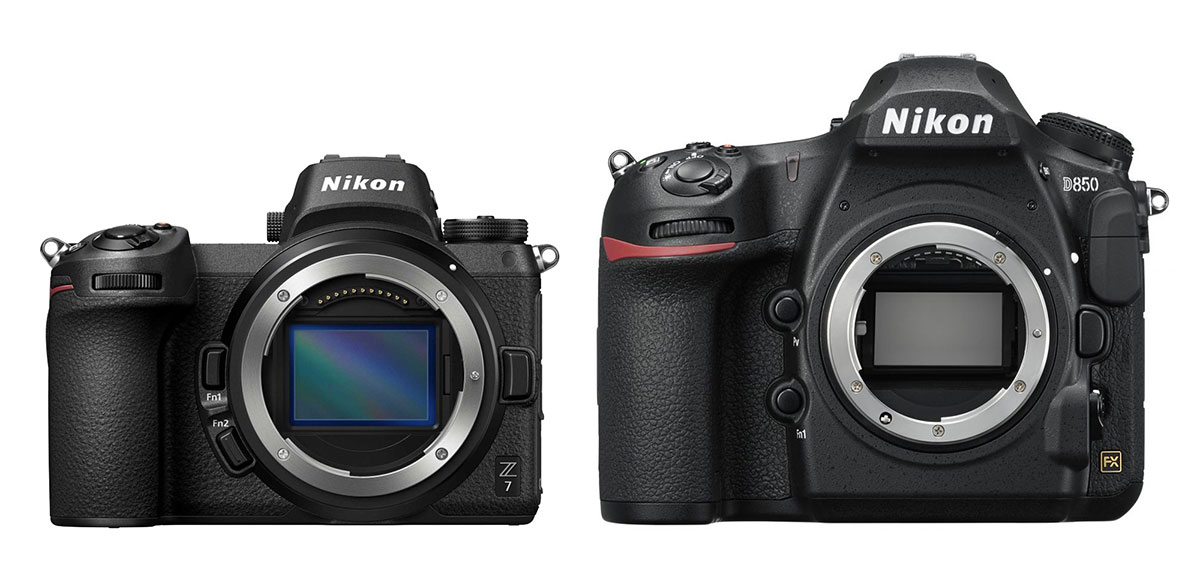
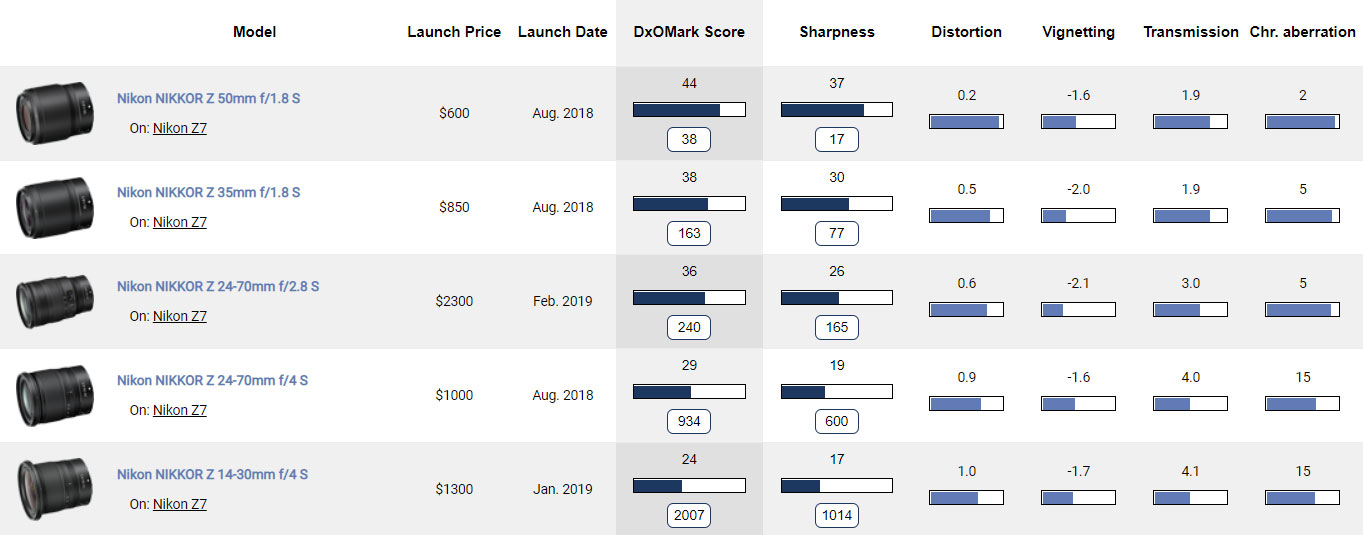
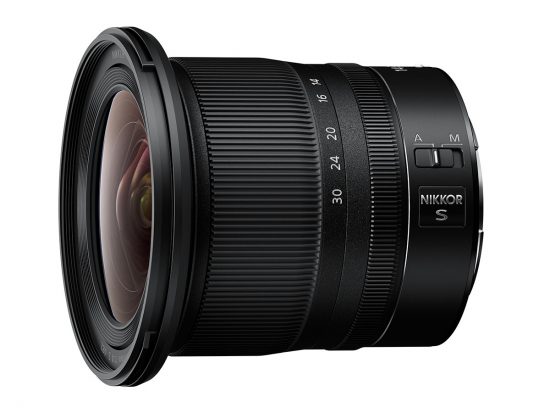
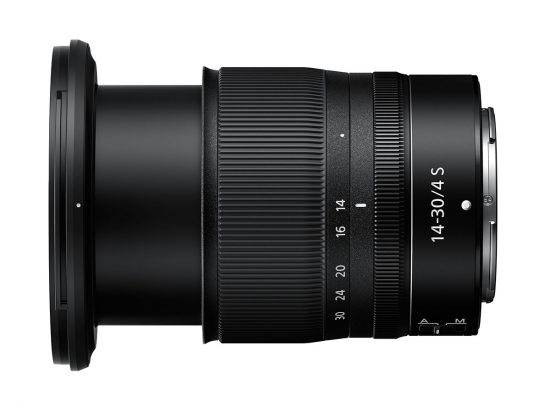
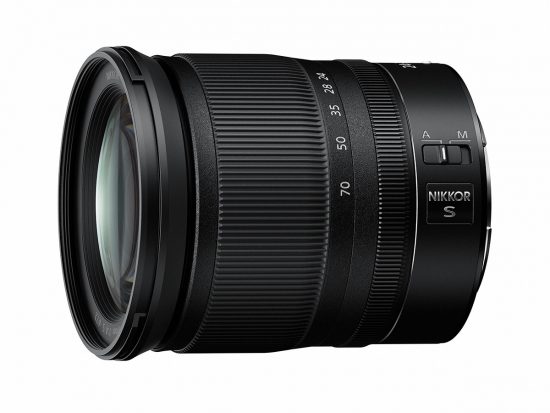
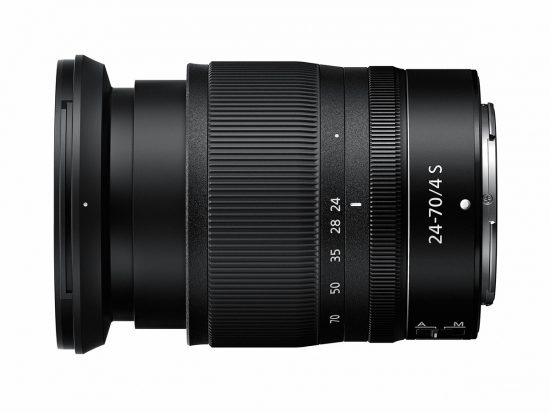
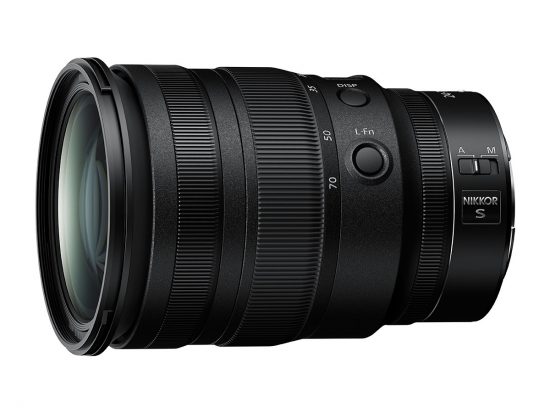
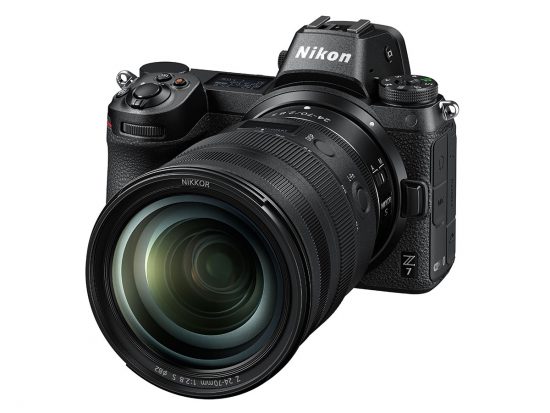
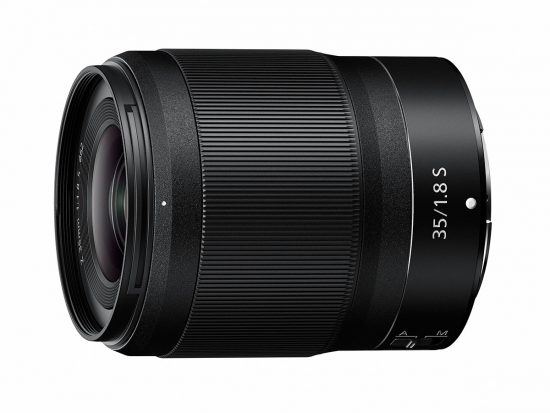
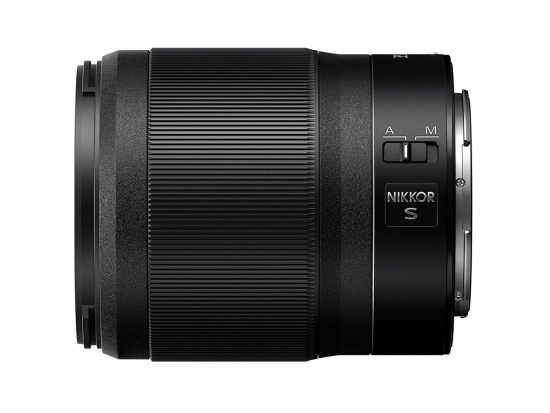
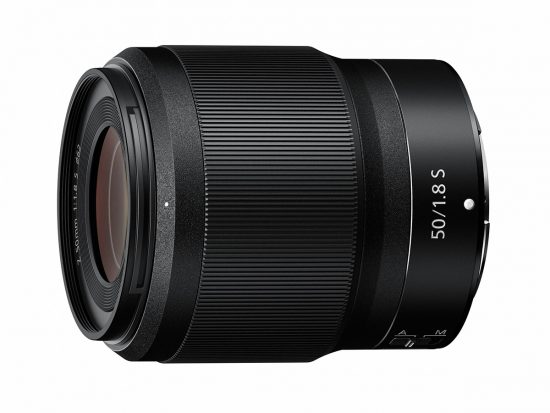
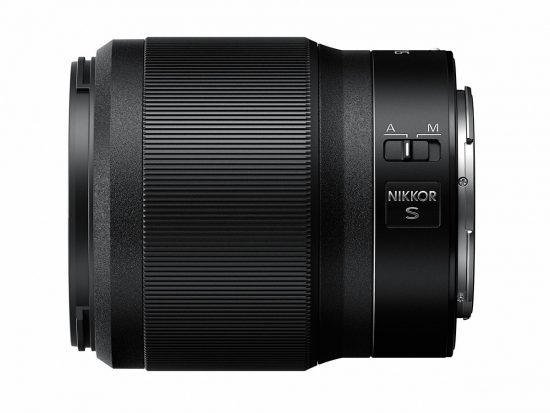
DXOMARK encourages its readers to share comments on the articles. To read or post comments, Disqus cookies are required. Change your Cookies Preferences and read more about our Comment Policy.